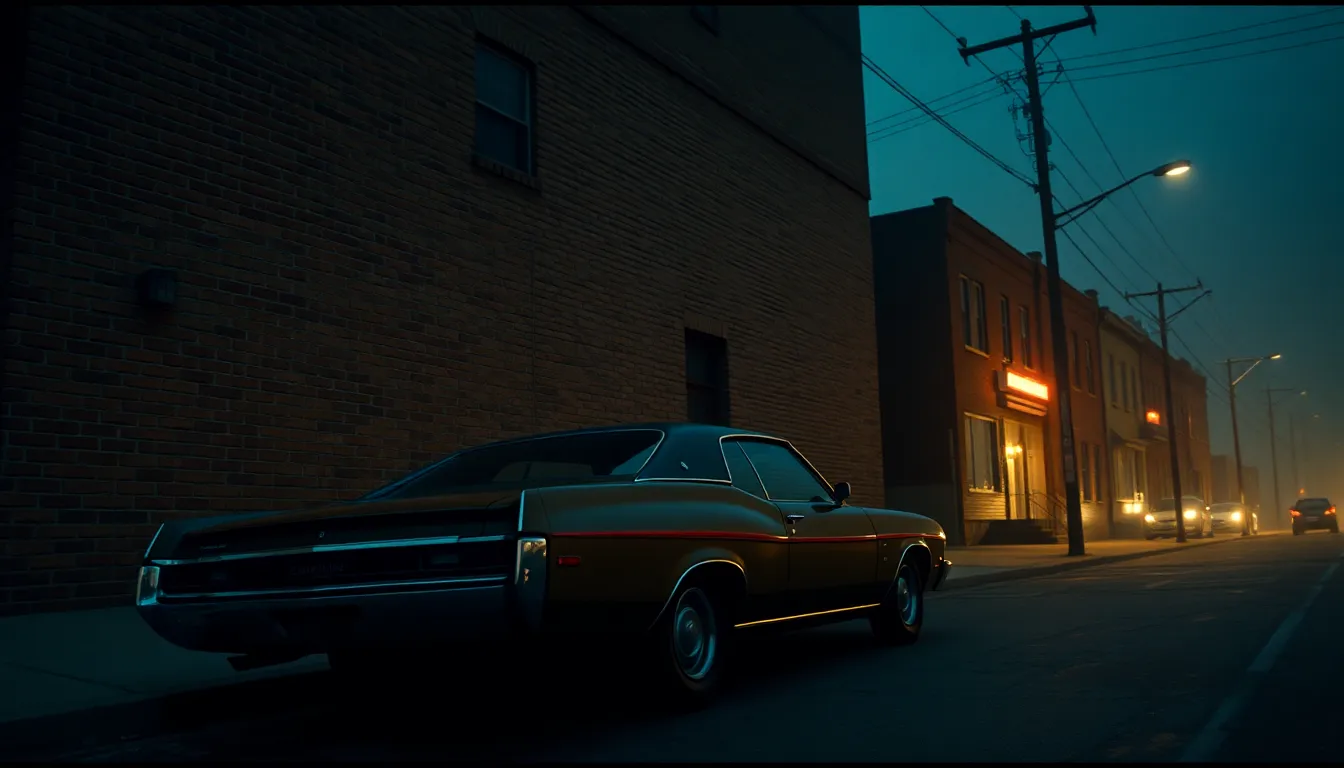“Kill the Irishman” brings to life the gripping true story of mobster Danny Greene, showcasing a stellar cast that elevates this crime drama to new heights. With a mix of seasoned actors and rising stars, the film captures the essence of 1970s Cleveland’s tumultuous mob scene.
At the heart of the film is Ray Stevenson, who delivers a powerful performance as Greene, embodying the character’s fierce determination and resilience. Alongside him, actors like Vincent D’Onofrio and Christopher Walken lend their talents, creating a dynamic ensemble that keeps viewers on the edge of their seats. This article dives into the cast of “Kill the Irishman,” exploring their roles and the impact they had on this captivating narrative.
Table of Contents
ToggleOverview of Kill The Irishman
“Kill the Irishman” depicts the rise and fall of mobster Danny Greene amid Cleveland’s 1970s organized crime landscape. The film illustrates Greene’s battles against rival mob factions and his uncanny ability to evade death multiple times, establishing a gripping narrative.
Ray Stevenson stars as Danny Greene, delivering a powerful portrayal of a man fiercely loyal to his Irish roots and willing to confront the odds. Vincent D’Onofrio plays John Nardi, a significant mob associate, showcasing his ambition and intricate relationship with Greene. Christopher Walken portrays Joe Manditski, a seasoned mobster whose allegiance shifts throughout the story.
Additional cast members include Val Kilmer as FBI agent John O’Sullivan, who provides insight into law enforcement’s attempts to manage the escalating violence. Linda Cardellini plays Greene’s love interest, impacting his decisions and humanizing his character amid the chaos.
The film’s narrative draws heavily from true events and offers insight into 1970s Cleveland culture, highlighting themes of loyalty, betrayal, and the quest for power within the mob. Each actor’s performance enhances the story, creating a well-rounded and engaging depiction of this turbulent period.
Main Cast Members

“Kill the Irishman” features a strong ensemble cast that enhances the film’s captivating portrayal of organized crime in 1970s Cleveland. The performances bring depth to the narrative, showcasing a range of characters involved in the tumultuous mob scene.
Actor Profiles
- Ray Stevenson: A seasoned actor known for his powerful screen presence, Stevenson portrays Danny Greene, the film’s central figure. His dynamic portrayal captures Greene’s resilience and cunning, making him a memorable character within the organized crime genre.
- Vincent D’Onofrio: D’Onofrio plays John Nardi, a pivotal mob associate in Greene’s story. Known for his versatility, D’Onofrio brings complexity to Nardi, depicting loyalty and ambition within the criminal underworld.
- Christopher Walken: Walken takes on the role of Joe Manditski, an experienced mobster navigating shifting allegiances. His performance adds a layer of intrigue, reflecting the unpredictability of mob relationships.
- Val Kilmer: Kilmer plays FBI agent John O’Sullivan, tasked with combating organized crime. His portrayal provides insight into the law enforcement perspective during this era, highlighting the challenges faced against the mob.
- Linda Cardellini: Cardellini portrays Greene’s love interest, adding emotional depth to Greene’s character. Her role emphasizes the personal relationships affected by crime and violence.
Character Breakdown
- Danny Greene: Ambitious and resilient, Greene’s character embodies the struggle for power and survival. His ability to evade death highlights his tenacity in the face of rival dangers.
- John Nardi: Nardi serves as Greene’s ally and a notable figure in the mob landscape. His loyalty wavers, reflecting the fragile nature of trust within organized crime.
- Joe Manditski: An enigmatic character, Manditski’s shifting loyalties impact Greene’s journey. His involvement showcases the complexities of mob alliances during turbulent times.
- John O’Sullivan: O’Sullivan represents law enforcement’s determination to dismantle organized crime. His role underscores the conflict between the mob and authorities seeking justice.
- Greene’s Love Interest: This character offers a glimpse into Greene’s personal life, illustrating how crime affects relationships. Her presence humanizes Greene, adding layers to his persona.
Supporting Cast
The supporting cast of “Kill the Irishman” enhances the film’s narrative and adds layers to the story of Danny Greene. Their performances contribute significantly to the portrayal of the 1970s mob scene and the dynamics of organized crime.
Significance of Supporting Roles
Supporting roles in “Kill the Irishman” play crucial parts in shaping the storyline and character development. Each actor’s contribution introduces critical themes of loyalty, betrayal, and ambition. For instance, Vincent D’Onofrio as John Nardi embodies the conflicting loyalties within the mob, showcasing both friendship and rivalry. Likewise, Val Kilmer’s portrayal of FBI agent John O’Sullivan highlights the struggles law enforcement faces when battling organized crime. These roles, though secondary, enrich the film’s exploration of the intricate relationships within the mob landscape.
Notable Performances
Several performances stand out within the supporting cast:
- Vincent D’Onofrio: His portrayal of John Nardi captures the essence of a mob associate torn between loyalty to his friend and ambition within the crime organization.
- Christopher Walken: Walken’s performance as Joe Manditski offers a nuanced depiction of a seasoned mobster whose loyalties waver, emphasizing the unpredictable nature of mob connections.
- Val Kilmer: As John O’Sullivan, Kilmer presents an insightful look into the FBI’s efforts, illustrating the challenges in dismantling organized crime.
- Linda Cardellini: Her character, a love interest of Greene, provides emotional depth in the film, reflecting the human consequences of crime.
These notable performances collectively enhance the storytelling of “Kill the Irishman,” making the supporting cast integral to the overall impact of the film.
Behind The Scenes
The behind-the-scenes elements of “Kill the Irishman” reveal the intricacies of bringing Danny Greene’s story to life, showing the careful planning and creative decisions that shaped the film.
Casting Choices
Casting for “Kill the Irishman” involved selecting actors who not only embodied their characters but also offered nuanced performances. Ray Stevenson, chosen for his ability to convey strength and vulnerability, excels as Danny Greene. Vincent D’Onofrio’s portrayal of John Nardi adds a layer of depth, showcasing the ties within the mob. Christopher Walken delivers an unpredictable Joe Manditski, illustrating the complexity of mob dynamics. Val Kilmer’s role as FBI agent John O’Sullivan provides a crucial glimpse into law enforcement’s perspective. Linda Cardellini captures the emotional weight of Greene’s love interest, highlighting personal sacrifice amid chaos. Each casting decision aimed to enhance character authenticity and engage audiences with the film’s historical context.
Director’s Vision
Director Jonathan Hensleigh envisioned a film that balances thrilling action with emotional resonance. He emphasized the importance of authenticity, drawing on real events to depict Cleveland’s mob landscape accurately. Hensleigh focused on character-driven storytelling, ensuring the audience connected with the film’s protagonists. He used stylistic elements reminiscent of 1970s cinema to evoke a specific era. Strategic pacing maintained tension throughout the narrative, particularly during intense confrontations. Hensleigh’s direction underscored the film’s themes of loyalty, betrayal, and survival, crafting a compelling cinematic experience that resonates with viewers.
Reception of Performances
Ray Stevenson’s portrayal of Danny Greene received significant acclaim for its intensity and depth, effectively capturing Greene’s resilience and strategic mind in the dangerous world of organized crime. Critics recognized Stevenson for embodying the character’s duality, showcasing both charm and aggression.
Vincent D’Onofrio’s performance as John Nardi was lauded for its complexity, illustrating the multifaceted nature of loyalty within the mob. His ability to convey ambition highlighted the internal struggles faced by mob associates.
Christopher Walken’s role as Joe Manditski garnered praise for its unpredictability, reflecting the often volatile relationships in organized crime. Critics noted Walken’s ability to bring a layer of nuance that added depth to the character’s shifting loyalties.
Val Kilmer’s depiction of FBI agent John O’Sullivan provided an insightful look into the challenges law enforcement faced against organized crime. His performance was recognized for balancing authority with vulnerability, adding realism to the character’s motivations.
Linda Cardellini’s role brought emotional weight to the film, illustrating the personal toll of crime on relationships. Her portrayal was noted for its authenticity, enriching the narrative with a human perspective on the events unfolding around Greene.
The performances of the supporting cast also contributed significantly to the film’s impact. Their portrayals of various mobsters and law enforcement officials added layers of intrigue and depth, enhancing the storytelling. Collectively, these performances emphasized key themes of loyalty, betrayal, and ambition, anchoring the film firmly in its historical context.
“Kill the Irishman” stands out not just for its gripping narrative but for the remarkable performances of its cast. Ray Stevenson leads with a powerful portrayal of Danny Greene that captures the essence of a man navigating the treacherous waters of organized crime. The supporting actors, including Vincent D’Onofrio and Christopher Walken, add layers of complexity to the story, bringing to life the intricate dynamics of loyalty and betrayal within the mob.
Each character enriches the film’s emotional landscape, from Val Kilmer’s insightful FBI agent to Linda Cardellini’s poignant love interest. Together, they create a compelling cinematic experience that resonates with audiences, making “Kill the Irishman” a memorable exploration of a tumultuous era in American history. The film’s authenticity and character-driven storytelling leave a lasting impression, highlighting the talent behind and in front of the camera.




